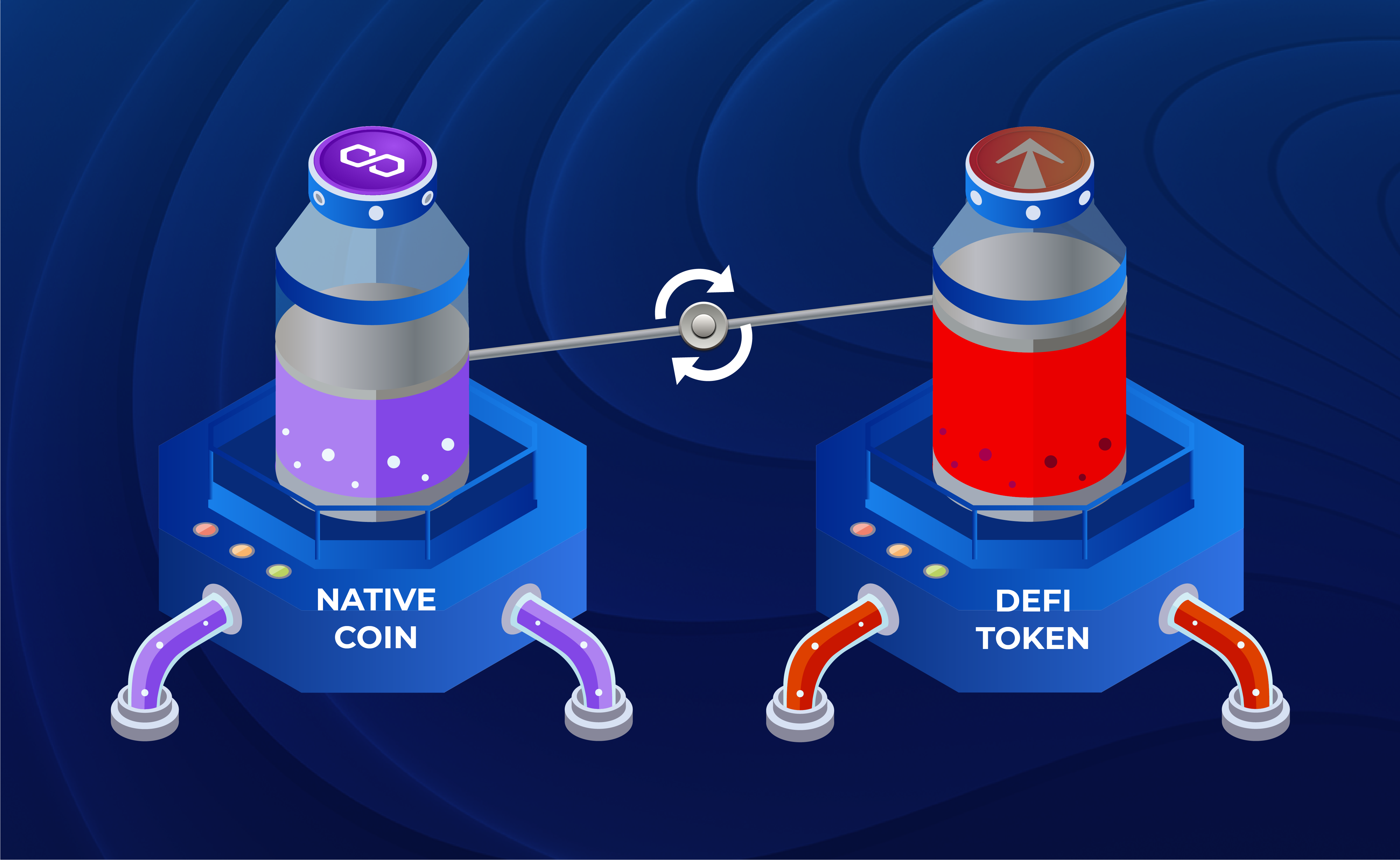
Jul 7, 2023
CrossX Released on dAppSocial
Move your stablecoins cross-chain for cheaper with CrossX! Earn immediate yield by providing liquidity.
Stay up to date on what's happening in the EverRise Ecosystem!
EverRise Leadership ~ May 19, 2022
Liquidity pools, or LP, are what allow cryptocurrencies to trade on decentralized exchanges (DEXs).
Liquidity is the ability to buy and sell assets. It makes it easier to convert to and from an asset. Cash is the ultimate liquid asset on a balance sheet and assets are more liquid the closer they are to cash. Everything has different levels of liquidity. In a market, higher liquidity means that it is easier to buy or sell an asset. If something is less liquid, it will be harder to sell and take more time to find the right buyer. It takes longer to sell a house than it does to walk to the store to buy a pack of gum.
In centralized exchanges, market makers provide liquidity to the market to set the market price. They facilitate transactions to make it easier for individuals to more efficiently execute trades. A single entity is constantly buying and selling to match orders. They gauge the buy and sell pressure to establish an equilibrium price.
Decentralized exchanges, on the other hand, use an automated market maker (AMM) to set the market price. The AMM uses a formula to set the market price without any external control. The AMM is decentralized and only reacts to the buys and sells coming in to create a price for each trade as it comes in. These trades are facilitated by the liquidity pool. Some examples of AMMs are Uniswap, PancakeSwap, Curve, and Balancer.
Liquidity pools are a combination of two assets that allow trades to take place. They support transactions, or swaps, between the two assets combined into a liquidity pair. Tokens and coins are typically paired with either a native coin, such as ETH or BNB, or a stable coin, such as USDT or BUSD. The two are combined into an LP token and deposited into the liquidity pool on a decentralized exchange. By pairing two assets, such as a token and dollars, you give value to one asset in terms of the other. Once the LP is set, a token has a price in dollars.

Users interact with the liquidity pool by sending one of the assets to the LP and receiving the other asset from the LP. As long as the LP is there, anyone can freely trade between the two assets at any time.
Automated market makers work by using a constant product formula. The initial amounts of each asset are multiplied by each other to create the ‘product’ and this number is then kept ‘constant’ while trading takes place. The AMM determines how much of each asset should be in the LP by using this formula. As long as no liquidity is added to or removed from the LP, this number will stay the same. If there are 10 tokens and $10 are in the initial LP, the constant product is 100 ($10 * 10 tokens).
When dollars, or whatever the token is paired with, are added to the LP, tokens must be removed to maintain the constant product. This is how trades occur on decentralized exchanges; one asset is added to the LP and the other is removed. Continuing the earlier example, if $10 is added to the LP, there is a total of $20 in the pair. Since the constant product is 100, after dividing by $20, there will now be 5 tokens. You spent $10 to get 5 tokens.
The price of the token is determined by the ratio of assets in the liquidity pool. Each time a trade goes through the LP, the amount of each asset in the pair changes which changes the ratio of the them. If there are 10 tokens and $10 in the LP, the price of the token is $1 ($10 / 10 tokens). However, you spent $10 to receive 5 tokens so they were $2 each. This change in price is the price impact of the trade.

An example of a trade with a price impact of less than 0.01% price impact.
The price impact of a trade is how much the price will change based upon the trade you are about to execute. The smaller the liquidity pool, the greater the price impact. If the LP was $1000 and 1000 tokens, the price would be the same as before, $1 per token. The price impact would be much smaller now with the $10 trade. The new constant product would be 1,000,000 and you would receive 9.9 tokens instead of the 5 tokens you received earlier. The price impact is now 1% instead of the 100% it was before. Since there is more liquidity, the token is more liquid and it is easier to realize the full value of the token.
A larger LP means less volatility and a more stable price. Each trade has a much smaller effect on the total LP so more volume can take place at around the same price.
LP tokens can be added and removed from decentralized exchanges. When LP is added or removed, the price stays the same but the amount of each asset of the pair changes which creates a new constant product. Providing liquidity is a form of staking. You pair the two assets into an LP token and transfer the LP token to the liquidity pool. DEXs reward liquidity providers with a portion of the trading fees collected from each swap.
Initial liquidity is provided by the project itself and is typically locked for a period of time or through a dApp like EverOwn to prevent a liquidity rug pull. A rug pull occurs when the liquidity is removed and trading can no longer take place. Some examples of liquidity lockers are Unicrypt, CryptEx, and Unilocker.
Liquidity pools form the foundation for all trading on decentralized exchanges. They create the price and determine the price impact of each trade as they occur and allow people to continuously buy and sell. Larger liquidity pools create a stronger backing for the traded asset. It’s important to note the size of the LP because it determines how the price will change in the future. The liquidity pool is what gives the token value so changes to the LP will change the value of the token because the token becomes more or less liquid.

Jul 7, 2023
Move your stablecoins cross-chain for cheaper with CrossX! Earn immediate yield by providing liquidity.

Jan 31, 2023
Starting today, each RiserBotz minted is entered to win one of five free RiserBotz daily.

Jan 17, 2023
These bots are here for good! RiserBotz is a collection of 10,000 PFPs on the Ethereum blockchain. They are the first ERC-721 token that holders can lock in their wallet. EverRise, Inc. ....